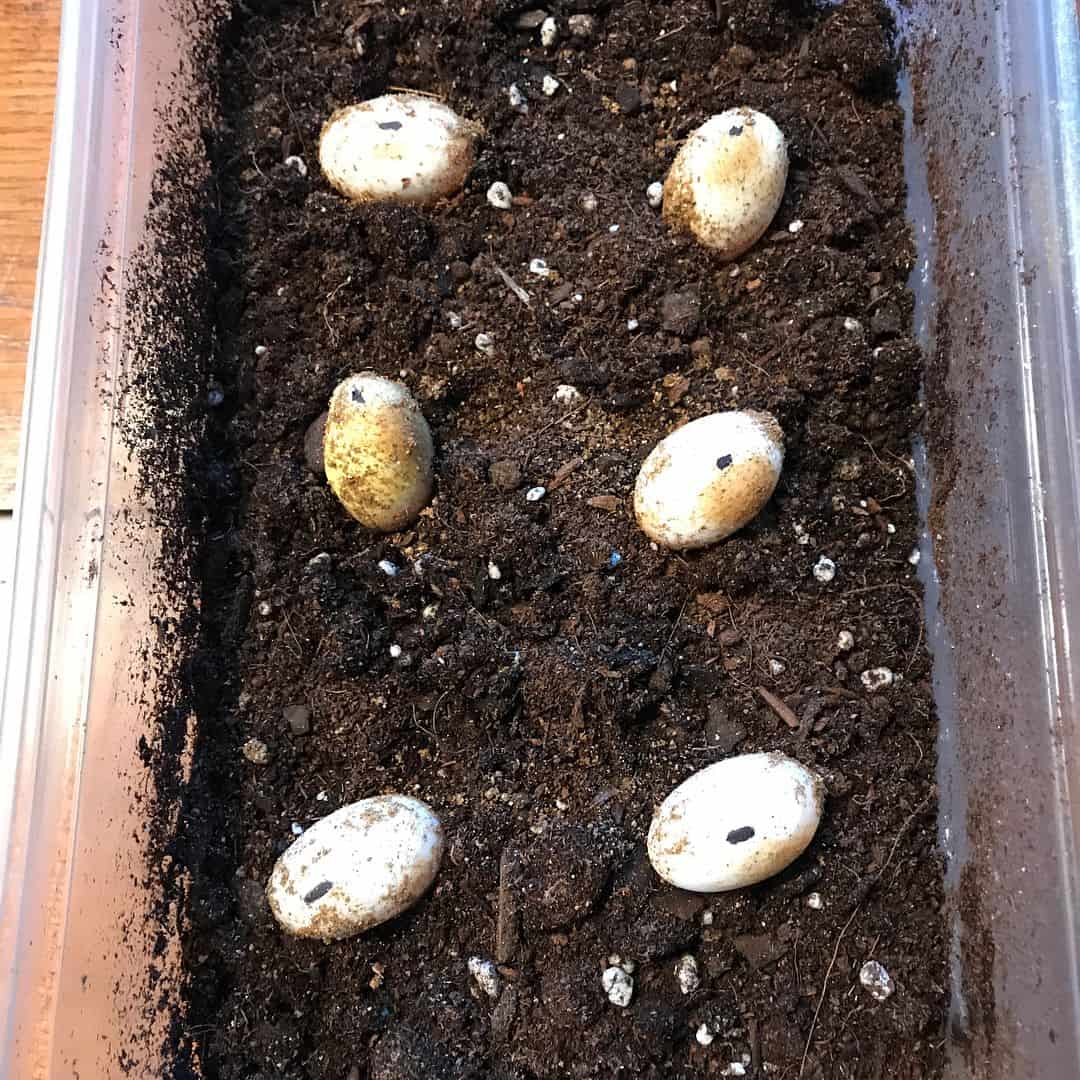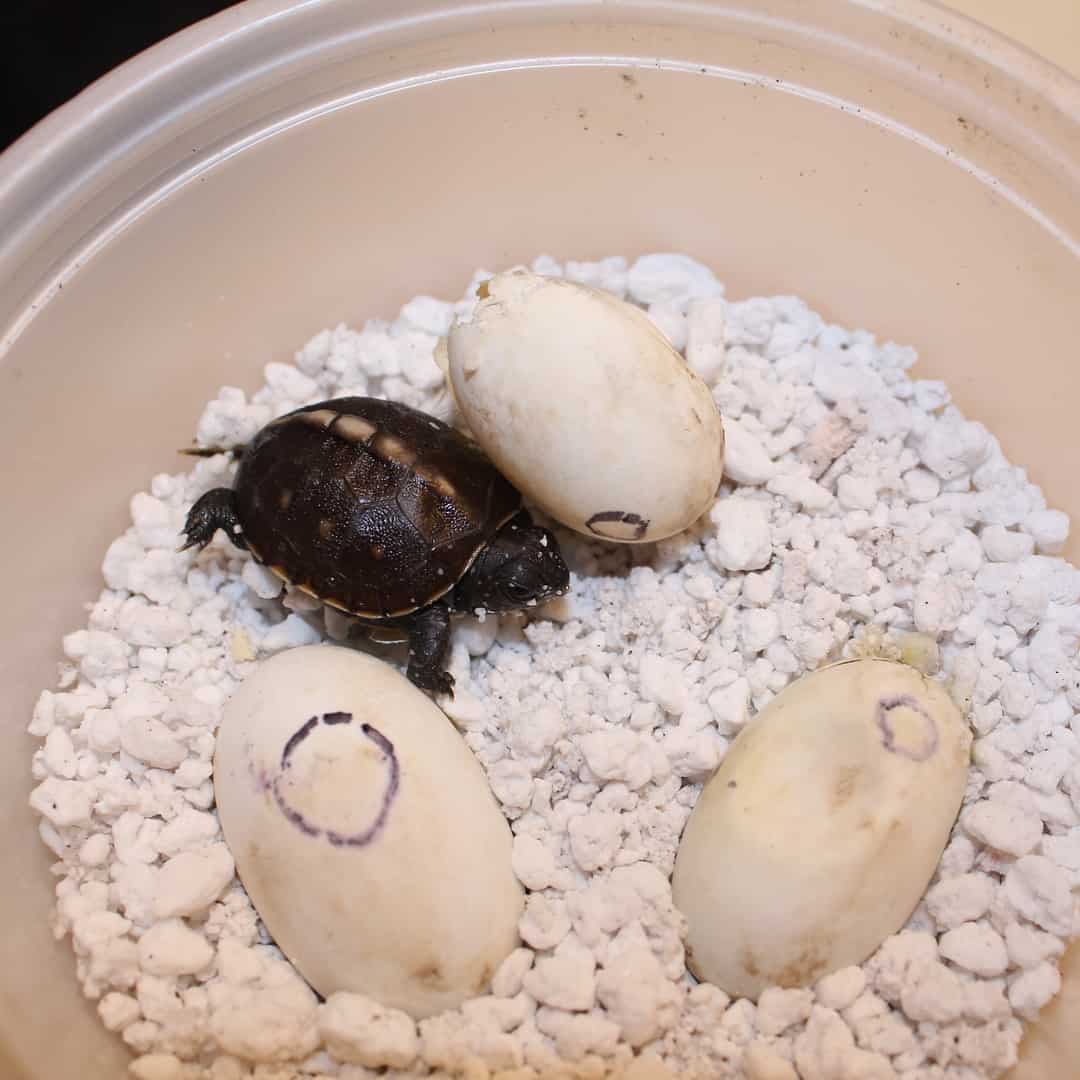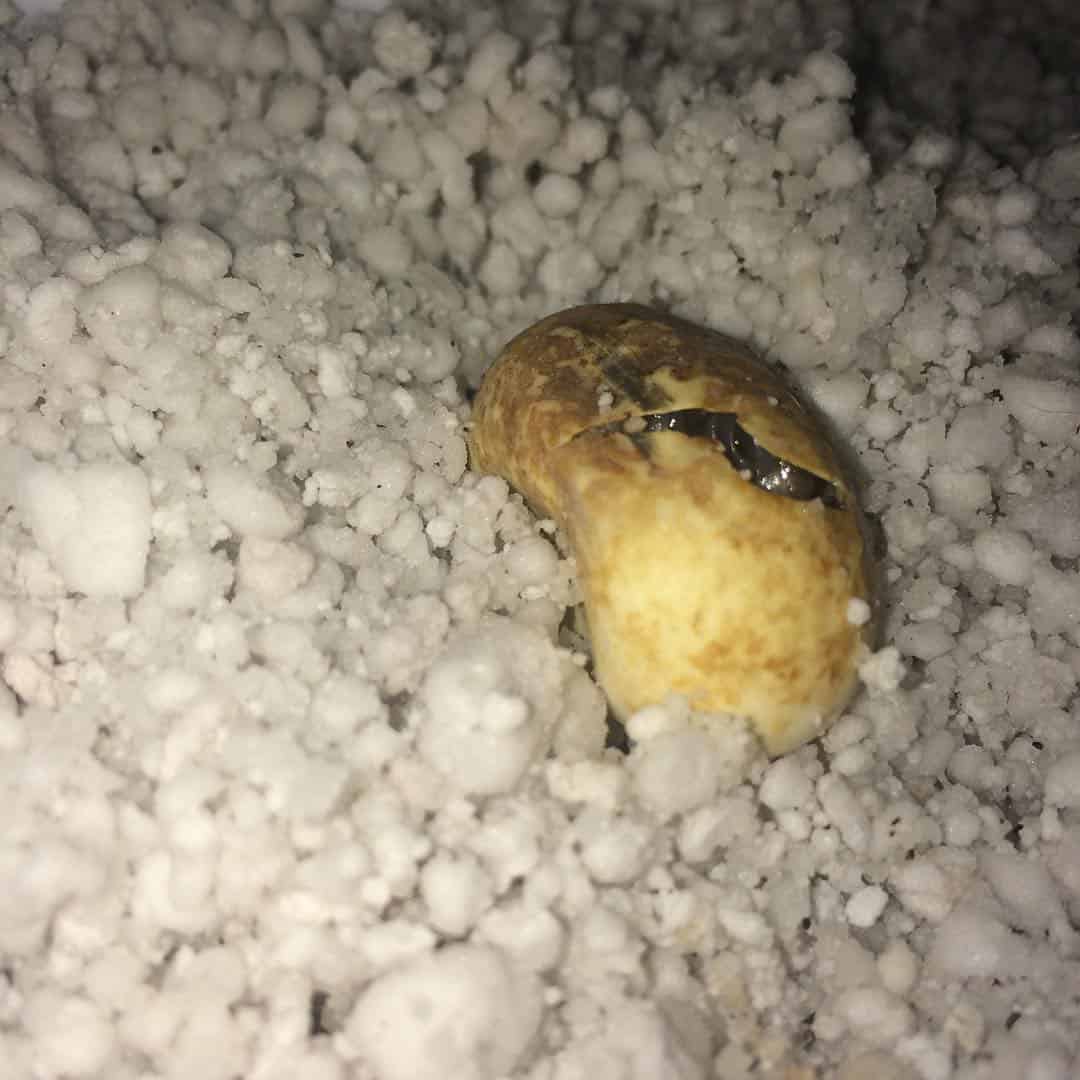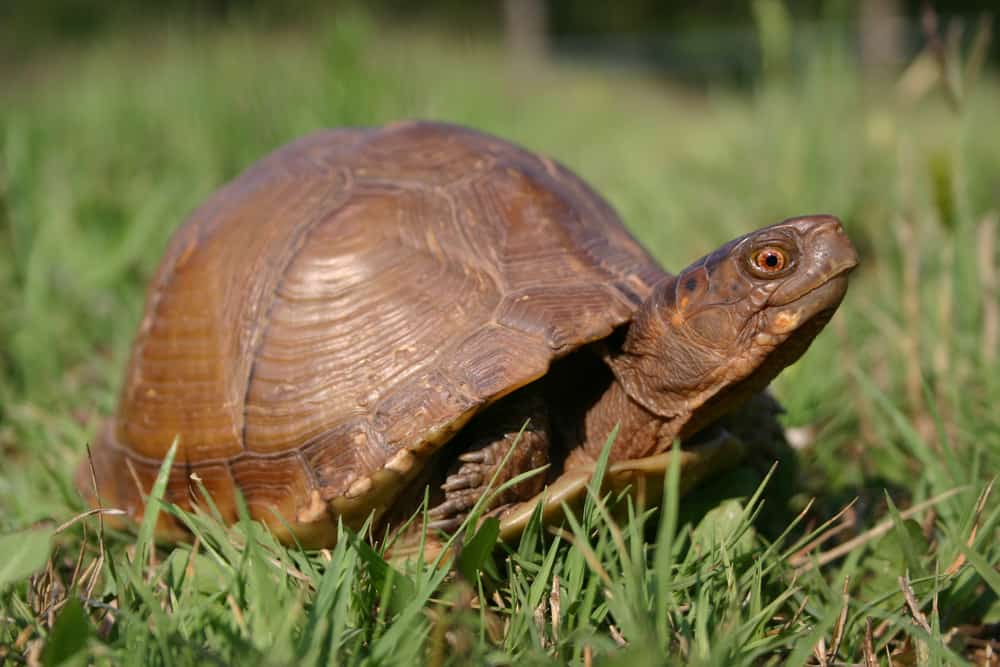Box turtles are easily one of the most popular pets worldwide. They are quiet, easy to care for, and for the most part, very predictable.
But they do have their surprises, and at some point, you may find a small clutch of adorable eggs in their enclosure. You might struggle to determine how this happened and what you must do to best care for them.
Whether your turtle has recently laid eggs or you’re interested in breeding your box turtles, we’re here to help. This article will explain everything you need to know, from how long they take to hatch to the best ways of supporting their incubation and more!
How long does a clutch of box turtle eggs take to hatch?
The incubation for turtle eggs varies depending on their species. And even then, subspecies may have slight variations between each other.
But generally speaking, box turtle eggs produce one clutch of eight to nine eggs from May to July. On average, eggs will take 55 to 90 days to hatch, meaning you can expect the babies sometime between August and October.
As you can see, some eggs can hatch earlier than others. And unfortunately, some might not even hatch at all. So what exactly influences the success rate?
Factors that influence whether a box turtle egg hatches
Below are factors influencing whether your egg will hatch and when.
So why did a batch of eggs fail to produce a single baby turtle? There are a few potential reasons.
1. Biology
Despite waiting the maximum time, sometimes the eggs will not hatch. This can be a confusing and disappointing thing to experience for a turtle owner.
The most common reason eggs did not produce any offspring is simple biology. Female turtles can lay eggs without having to mate with a male turtle. This means the eggs are infertile and cannot produce offspring.
An easy way to tell whether your egg has a developing embryo inside is to use a flashlight to light up the inside. Closely examine the inside for signs of a yolk sac or blood vessel. Do note that it might take a little time for blood vessels to develop correctly, so check back in a few days just in case of a delay.
It can take five to ten years for a female box turtle to reach sexual maturity. They can also store sperm for up to 4 years – just because a male hasn’t been around recently doesn’t rule out the possibility of a viable clutch!
2. Orientation
Despite having a tough shell, turtle eggs are surprisingly soft and prone to damage. They will not do well with lousy handling or being roughed around.
The orientation or direction of the egg is pivotal. Embryos develop at the top of the egg and, once set, should not be moved. Even the slightest shake can have a detrimental influence on the viability of the young turtle.
A good practice many turtle owners do is using a marker to note the top orientation of the egg for future reference. This should be done immediately if they need to be moved or repositioned.
If you suddenly change the egg’s direction, the embryo could flip, detach from the egg, and subsequently perish.
3. Temperature and humidity
Reptiles will always rely on the proper temperature and humidity, and raising their young is no different. One of the most common reasons a hatch fails or dies prematurely is if the temperature or humidity is not ideal for a reptile like a turtle.
While the figures might vary depending on the subspecies of box turtle you have, a good range to aim for is between 72 to 81 °F. This ensures the egg is well insulated but won’t dehydrate or crack under pressure.
Because box turtles are only semi-aquatic, you should aim for a humidity level of about 80%. You can achieve this level by placing eggs on a suitable substrate, like moss, or a damp paper towel, which you moisten regularly. You can also mist the incubation area periodically to boost levels.

primitivechef
4. Predation
If your box turtle is in an outdoor habitat and you allow her to lay in a prepared nest site like a box or pre-dug cave, you must go to extra lengths to protect the eggs from potential predators.
Nature is cruel, and while box turtles might dig a series of ‘fake nests’ to trick predators and cover their eggs in the dirt to hide them, there are several predators to be mindful of.
The biggest culprits will be rodents like raccoons, skunks, and foxes who can easily find and devour a clutch in one sitting. Additionally, pet animals like dogs and cats, snakes, garden birds, and insects like ants can pick at and crack eggs.
Placing traps and fences around your enclosure can help prevent invaders. But you should consider moving them indoors for the remaining incubation period if you feel they’re under threat. Again, the sooner you do this, the better, as the eggs must not be disturbed during development.
5. Outside or inside?
Although it may seem like the more natural thing to do, leaving a clutch of turtle eggs to their own devices is asking for trouble.
As well as predation, a host of other factors can destroy eggs and significantly reduce the survival of hatchlings. This includes adverse weather and accidental damage.
Research has estimated that from 100 eggs in the wild, only seven will successfully hatch. This dramatically low hatchling survival rate means that If you’re keen to raise baby turtles, it’s highly recommended you take them indoors for incubation.

tort.stork
FAQs
How do you sex turtles?
If you’re breeding box turtles, you will need a male and a female. So how do you tell the gender of your turtles? The key ways to identify a box turtle’s sex are through its appearance:
- Female eastern box turtles, for example, have brown eyes and dull yellow markings. Females also have a flat plastron (underbelly).
- Males, on the other hand, will have red eyes and brighter, more colorful shell patterns. They also have a concave plastron.
How can you tell if your turtle is pregnant?
Especially if you’re actively trying to breed your turtle, you may want to know to tell if your turtle is pregnant or not.
One of the biggest signs she is pregnant is a sudden and dramatic change in behavior. She might become more restless and move around her enclosure sporadically. She may also bask for long periods or not at all.
Additionally, you might be able to feel eggs from holding her, though it’s important not to apply too much pressure when touching her belly in case you damage them.
How to care for your turtle hatchlings
If you’ve successfully hatched baby box turtles, you will no doubt be keen to provide them with everything they need in the early few days of their life.
Because box turtles are omnivores, you should provide a varied diet of insects and vegetation for them to eat:
- For insects, consider small snails, slugs, worms, and crickets.
- Finely dice up anything from carrots and peas to berries, mushrooms to dandelions, leafy weeds, and clover.
Some food brands produce specially made baby turtle food, which you might consider to supplement their diet in the early days and weeks. These usually have a meal plan for how often you should feed the turtles. Finally, don’t forget to leave fresh water for the turtles to drink, wade and soak in.

sprayjockey
Conclusion
Not only are box turtles a great pet to raise on their own, but many pet owners are understandably very excited about the chance of raising a clutch of babies.
As our article has shown, box turtle eggs follow a somewhat predictable timeframe for hatching. Females often lay their one set of eggs towards the warmer summer months. That means you should expect brand new turtles come autumn time.
But you can’t just leave the eggs to develop on their own. They will need your help, whether by placing them in a dedicated incubator, protecting them from harm and predation, or ensuring they have everything they need once hatched.
If you have a question about box turtles and their eggs or want to share your experiences looking after these amazing creatures, please comment below.
In short, remember:
- Only mated female turtles will produce viable, fertilized eggs.
- Avoid rough handling or changing the direction of eggs once they’ve been set. This can detach the embryo inside, killing it.
- When incubating, ensure that both the temperature and humidity are optimally set. Box turtles’ eggs thrive best between 72 to 81 °F and 80% humidity.
